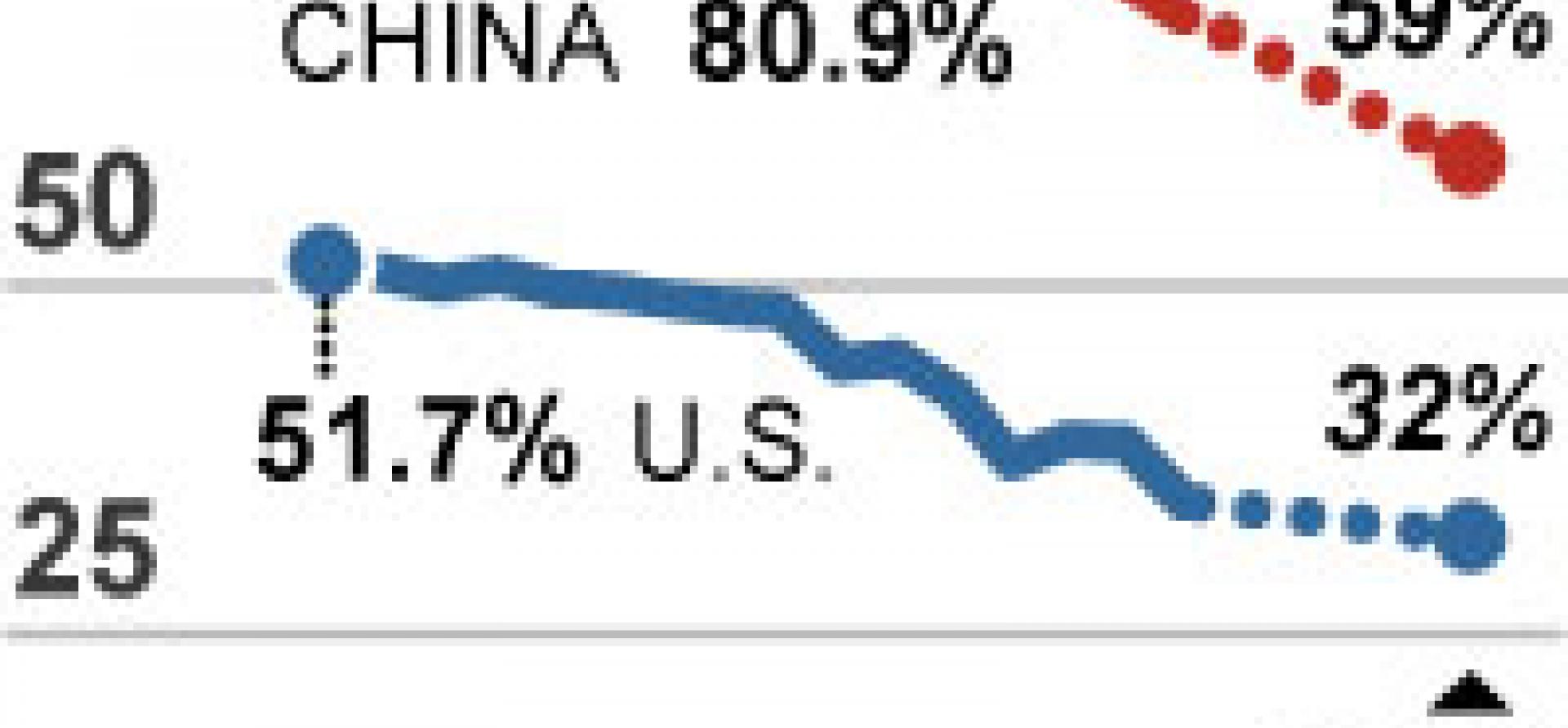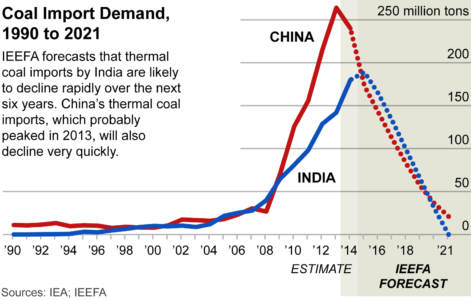Eight (8) Signs Now Is the Time to Invest in Energy Transformation

Evidence continues to mount that the world is beyond peak coal consumption and that its appetite for thermal coal is waning.
This trend has gathered remarkable momentum in 2015, as seen in sharp consumption declines in key coal markets. We’ve published a report today that explores recent developments around the world: “Carpe Diem: Eight Signs That Now is the Time to Invest in the Global Energy Market Transformation.”
Our findings:
- Coal’s share of electricity generation in key countries is declining. IEEFA sees it happening much more quickly than many analysts.
- Demand for seaborne thermal coal is declining, and prices have collapsed. IEEFA sees internationally traded coal markets as having likely peaked in 2014 at an estimated 1,113 metric tons. We forecast a further 30 percent decline by 2021, to 762 metric tons. Our outlook is based on the likelihood that China, Western Europe and Japan have already passed peak import demand—all in in 2013-2014—and that India’s demand for thermal coal imports peaked in mid-2015.
- The price of renewable energy is declining. Technology innovation and economies of scale are working together to drive the down the capital cost of renewable energy deployments. The cost of solar continues to decline at a double-digit rate annually, and solar is rapidly moving toward grid parity in an increasing number of markets. Rapid cost reductions in battery technology will compound the rate of deployment of distributed-energy solutions, further undermining the commercial returns of existing fossil-fuel assets.
- Investment Capital is moving rapidly from coal into renewables. Investors over the past decade have put US$1.5 trillion into clean energy—mostly solar and wind, and 2014 was a record year. Renewable energy capacity, in the meantime, has grown even faster. These trends have triggered a considerable shift and growing acceptance in financial market of the structural decline of coal and the demand for raising capacity in low-emissions investments.
- The coal-fired sector has been overbuilt. China has built more coal-fired plants than it can support, India is on a renewable-energy tear, and the U.S. is retiring coal-fired power plants.
- Coal companies are in deep financial distress. Coal producers are in dire straits from a combination of energy-efficiency gains, eroding electricity demand, conversions to gas-fired power capacity, an expanding buildout of renewable energy projects, and the impact of pollution-control regulation.
- Structural decline in coal demand is an increasingly consensus call. What was once an outlier point of view—that global coal markets are in decline—has become more mainstream.
- Global banks are shifting their focus to renewables. An increasingly sizeable group of financial institutions see the inevitability of rising regulatory pressures, and hence the rising stranded-asset risks of fossil-fuel assets.
Much of the change we describe is being driven by technological innovation and rapidly falling costs across the renewable and energy-efficiency sectors. Much also is being driven by emerging policies and investment strategies rooted in the recognition that a transformation is under way and now is the time to seize the day.
Tim Buckley is IEEFA’s director of energy finance, Australia. Tom Sanzillo is IEEFA’s director of finance.

















